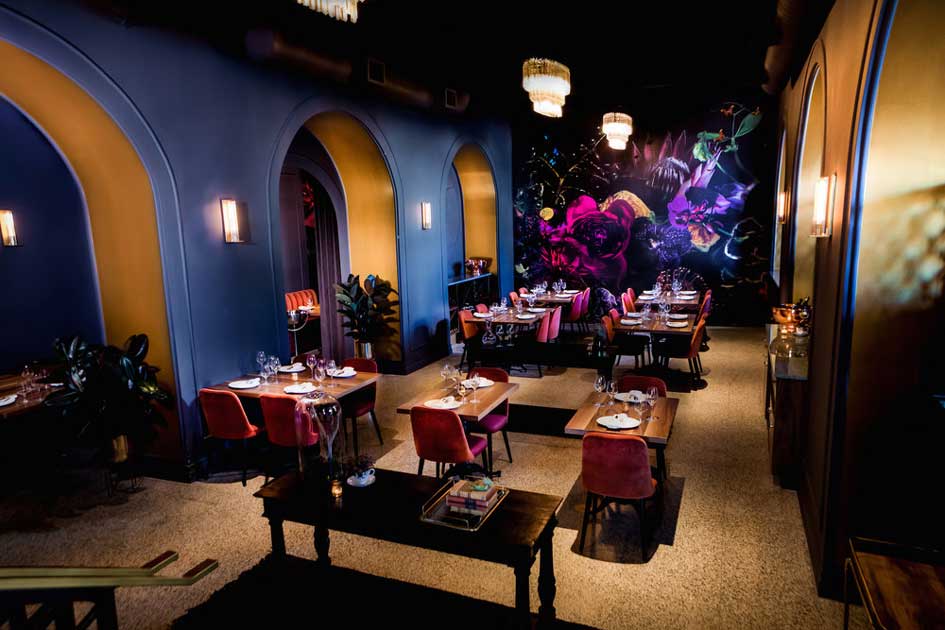Pan Asian Restaurant Islamabad: Discover Exquisite Asian Cuisine
Pan Asian Restaurant Islamabad: Discover Exquisite Asian Cuisine
Blog Article
Savor Genuine Eastern Food With a Pan-Asian Spin for a Culinary Journey
Getting started on a cooking journey via authentic Asian food, enhanced with a Pan-Asian spin, uses an unique possibility to check out the rich tapestry of tastes that define the area's diverse culinary customs. As you consider these enticing recipes, think about the social stories and historic impacts that form them, each bite using a tale waiting to be found. asian fusion restaurant.

Exploring Pan-Asian Tastes
In the realm of international gastronomy, Pan-Asian food stands out for its impressive diversity and the unified interaction of flavors from different Eastern cultures. This culinary technique commemorates the rich customs and special ingredients discovered across the continent, producing a tapestry of preferences that is both fascinating and satisfying. Secret to Pan-Asian cuisine is its ability to stabilize contrasting tastes-- sweet, salted, spicy, and sour-- while highlighting the quality and quality of each ingredient.
From the umami-rich soy sauce of Japan to the intense chili peppers of Thailand, Pan-Asian food supplies a considerable palette of tastes. These aspects are often combined in creative ways, improving dishes with layers of intricacy. For circumstances, the usage of fragrant herbs such as lemongrass and cilantro, typical in Vietnamese and Thai cuisine, includes a rejuvenating illumination to meals, while the unification of coconut milk provides a velvety, rich structure.
The emphasis on fresh produce and aromatic seasonings ensures that each dish is not only a feast for the palate however likewise for the senses. Pan-Asian food welcomes restaurants to start a culinary journey, discovering the vast and varied landscapes of Eastern gastronomy with every bite.
Combination Dishes to Attempt
While Pan-Asian food is celebrated for its conventional flavors, the modern-day cooking landscape is progressively embracing blend meals that blend these traditional elements with influences from other regions. This ingenious method not only honors the abundant heritage of Oriental cookeries but also presents novel taste experiences that interest modern tastes buds.
An archetype of such a fusion dish is the Korean-Mexican taco, where seasoned bulgogi beef is covered in a cozy tortilla, covered with kimchi and a zesty gochujang-infused salsa. This combination marries the bold, full-flavored tastes of Korea with the lively, fresh aspects of Mexican food. Similarly, sushi burritos have actually gotten popularity, integrating the delicate artistry of Japanese sushi with the passionate, hand-held convenience of a burrito, typically featuring fusion components like tempura shrimp and avocado with a drizzle of wasabi mayo.
Another notable recipe is Thai curry ramen, which instills the velvety, aromatic spices of Thai curry right into the soothing brew of typical Japanese ramen, producing a harmonious mix that tantalizes the senses. These combination meals prolong beyond simple uniqueness; they represent a culinary dialogue between cultures, encouraging expedition and advancement worldwide of Pan-Asian cuisine.
Necessary Active Ingredients and Spices
To truly value Pan-Asian cuisine, one have to recognize the essential components and seasonings that create its structure. This varied cooking design draws from a rich tapestry of Eastern traditions, utilizing an unified mix of flavors and appearances.
Aromatic components are critical, with ginger, garlic, and lemongrass being ubiquitous across numerous Pan-Asian recipes. These ingredients provide a fragrant base that boosts the intricacy of tastes. Seasonings such as celebrity anise, cardamom, and cinnamon introduce warmth and personality, resembling influences from areas like China and India.

Cooking Strategies and Tips
Understanding the art of Pan-Asian cuisine calls for familiarity with its distinctive cooking techniques, each adding to the vivid tapestry of tastes this culinary tradition is celebrated for. Central to these techniques is the stir-fry, a quick food preparation method that protects the dietary integrity and dazzling shades of active ingredients. Making use of a wok, the stir-fry approach permits for also warm distribution, important for achieving the particular texture and taste balance of Pan-Asian meals.
An additional essential technique is steaming, especially common in Chinese food. This mild technique keeps the natural flavors and nutrients of ingredients, making it ideal for seafood and vegetables. Dumplings, a beloved staple, typically benefit from steaming, resulting in soft, delicious structures.
Cooking, also indispensable, imparts great smoky midsts to dishes such as Oriental bulgogi or Japanese yakitori (asian fusion restaurant). This method often entails marinading ingredients, enabling tastes to penetrate deeply prior to food preparation over an open fire or warm plate
Finally, understanding the art of balancing tastes-- sweet, sour, salty, bitter, and umami-- is essential. Properly layering these aspects can boost a meal from ordinary to amazing, offering a facility and pleasing culinary experience that embodies the essence of Pan-Asian cuisine.
Eating Experiences Worldwide
Throughout the world, Pan-Asian food uses an unmatched eating experience, commemorated for its rich tapestry of tastes and dynamic discussions. This cooking sensation has actually gone beyond cultural boundaries, recording the hearts and tastes buds of food lovers worldwide. In multicultural cities like New York, London, and Sydney, Pan-Asian restaurants act as fusions where cooking customs from Thailand, Japan, China, and beyond converge, giving restaurants with a diverse mix of recipes that highlight the region's diversity.
The worldwide allure of Pan-Asian cuisine hinges on its ability to offer both credibility and technology. Cooks masterfully marry standard components such as lemongrass, soy sauce, and miso with modern methods, causing recipes that are both refreshingly brand-new and familiar. This this website combination permits restaurants to get started on a culinary journey that values heritage while accepting modernity.
Moreover, eating experiences are boosted via attentively designed atmospheres that mirror the values of Pan-Asian looks. From minimal Japanese-inspired interiors to dynamic Thai-themed my latest blog post rooms, each dining establishment offers a special ambiance that enhances the cooking offerings. Therefore, patrons are not just taking in a meal yet partaking in a social experience, making Pan-Asian eating a really global phenomenon.
Conclusion
The expedition of Pan-Asian food supplies an extensive understanding of the detailed interaction of flavors and culinary traditions throughout Asia. By embracing fusion meals such as Thai curry ramen and sushi burritos, the culinary journey not only highlights the adaptability of standard components but also showcases ingenious modern methods. This gastronomic journey, enriched by cooking techniques and essential spices, gives an unique possibility to appreciate the multiculturalism and culinary virtuosity that define Pan-Asian food on a worldwide scale.
Beginning on a cooking trip via authentic Oriental cuisine, improved with a Pan-Asian twist, provides an unique possibility to check out the rich tapestry of tastes that specify the area's varied culinary customs.In the realm of international gastronomy, Pan-Asian food stands out for its amazing diversity and the harmonious interaction of tastes from numerous Oriental cultures. Key to Pan-Asian food is its ability to balance contrasting tastes-- sweet, salted, spicy, and sour-- while highlighting the freshness and quality of each active ingredient.

Report this page